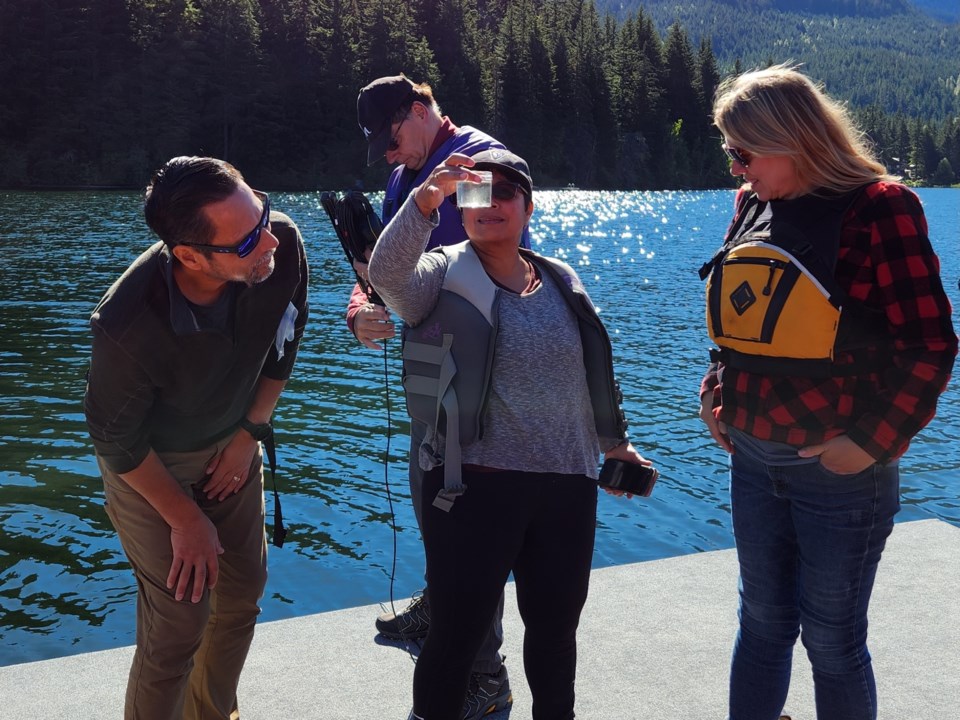The health of the Sea to Sky watershed will soon become less turbid, thanks to citizen scientists and a pollution monitoring program.
The Whistler Lakes Conservation Foundation (WLCF), in partnership with the Raincoast Conservation Foundation, is working on a water-monitoring project known as the Healthy Waters Program. The project has a two-and-a-half-year timeline, and its initial dataset will be presented to the public on May 11 at the Whistler Public Library.
Dr. Peter Ross, Raincoast’s chief scientist, will speak about the initial findings at 4 p.m. Raincoast works with staff scientists, academics, First Nations, government and NGOs, and seeks to research and create support for policies which safeguard the land and sea. The Healthy Waters Program provides important insight into water quality, and studying watersheds helps pinpoint pollution that deteriorates fish habitat.
Water is essential for all life on Earth, be it humans, zooplankton, salmon or killer whales. According to Raincoast, 80 per cent of ocean pollution is traced back to the land. But there isn’t a single agency responsible for tracking overall water pollution, which is why the Healthy Waters Program is a necessary step forward in understanding where and how pollution winds its way into ecosystems.
‘It’s almost like the public good’
The WLCF is monitoring water that drains into the Fraser River and Salish Sea, and samples 16 sites that encompass five water “buckets.” The buckets are source water, which is upstream of development; freshwater streams, creeks and rivers; road runoff from ditches and culverts; tap water inside of homes; and marine samples. The contaminants analyzed in Whistler are identical to other participating watersheds, so data will be comparable between geographies with different factors that influence each’s watershed health.
President of the WLCF, Lynn Kriwoken, explained the program is an additive to existing regulatory agencies that monitor water health at specific source points, like liquid waste treatment centres and tap water.
While these are necessary testing sites, the overall impact on a watershed goes above and beyond specific sources to the actions of society.
“[Non-point sources are] road runoff, road salt or tire chemicals that accumulate just from you and I and everybody else driving our cars, land-use developments—the cumulative effect of all of these actions in the watershed can cause concerns and problems,” she said.
“It’s almost like the public good. You can’t regulate a single user; it’s more of a collective contribution, and therefore, it has to be a collective effort to ensure that we’re doing the right thing and appropriate practices on the land.”
Kriwoken said initial findings could provide cautionary flags that inform future monitoring, but she stressed the study’s overall findings will provide validity once complete.
Raincoast is studying watersheds in the Chemainus River, Cowichan River, and Tod Creek on Vancouver Island, and the Cheakamus River at Whistler, Sumas Lake watershed in the Fraser Valley, and Hope Slough near Chilliwack. The foundation will publish summaries about the types of pollutants identified, with the ultimate goal of enabling solutions to protect and restore fish habitat in the province.
The WLCF is well-versed in studying water, with four years of field work monitoring five Whistler lakes: Alpha, Nita, Alta, Green and Lost Lake. The foundation combines expert scientists with volunteers who are passionate about lake conservation.
The WLCF’s annual general meeting (AGM) precedes the Raincoast presentation, and members of the public are welcome to attend. The AGM starts at 3:30 p.m.
The Lake Stewardship Society, which also partners with the WLCF, will also be in attendance.
“No single organization can do all this monitoring and reporting alone. And the value of citizen science and volunteers like ours and others really contributes [to watershed health],” Kriwoken said.



